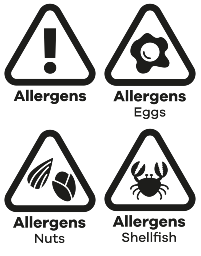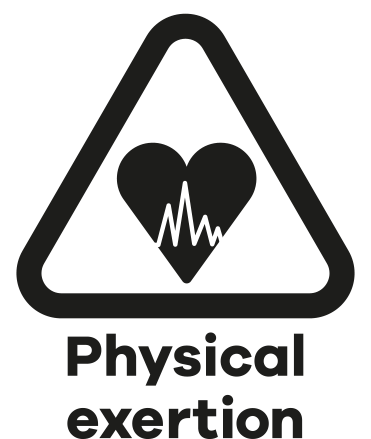Risk assessing programme activities
Each Girlguiding unit and meeting is different, so you need to assess programme activities based on your situation.
How to include programme activities in your risk assessments
When completing your risk assessment, you'll be thinking about your unit meeting space and girls to make sure you are as safe as possible. You'll also need to think about any risks involved in our programme activities.
To help with your risk assessments and make sure we’re all safe together, we’ve reviewed the programme and highlighted any potential risks in our skills builder and unit meeting activities. So you know what you need to include in your risk assessments.
Every unit and meeting space is different, so it's important to assess each risk based on your unit specifically. That’s why we can’t provide pre-populated risk assessments. There might be more risks or additional considerations based on your unit’s situation.
Here we've identified some of the main hazards and how you can mitigate the risk.
Age-appropriate
![]()
- Make sure that your girls are drawing or writing things that are suitable for everyone in the unit.
- Make sure conversations remain appropriate for all ages in the unit.
Allergens and food
- Check that nobody in the unit is allergic to any of the items you're planning to use.
- Consider any food allergens and dietary requirements and plan your meeting accordingly.
- Consider sensitivities to chemicals or objects that could result in reactions, such as latex.
- If you are using food, think about your hygiene arrangements. Have you got access to hot and cold water? If you can, have separate sinks for hand washing.
Fire
![]()
Other hazards might include cooking, gas or hot irons.
- Never leave a fire unattended and wait until it is fully extinguished before walking away.
- Always have a bucket of water, sand or earth nearby to put out the fire.
- Never light a fire on peat, under a tree or near shrubs and bushes.
- Make sure long hair is tied back and clothes and jewellery are tucked in when around a flammable object.
- Be aware of how the direction of the wind could blow the fire.
- A lit candle should never be left unattended.
- Put candles on plates or heatproof mats when burning.
- Make sure you know the emergency procedures and the actions you need to take in event of a fire.
- Include details of how people will evacuate and where they should assemble if there is a fire.
Going outside
![]()
- Depending on the activity, walk through the area yourself before taking girls out of the unit.
- Carry out a dynamic risk assessment for on the day risks that may not have been mentioned in the risk assessment.
- Make sure the area is clear of any significant risks that could cause harm.
- Change your plans and update risk assessment if adjustments need to be made.
- Make sure girls are aware of the task you are asking, and the boundaries on where they can go.
- Where necessary give the girls a briefing prior to going outside for an activity.
- Make sure ratio and consent forms are all in order within Girlguiding policies.
- Are there any risks from contact with insects?.
- Are there any hazards posed by animals? Consider dog bites, cat scratches, horse bites or kicks and risks from farm animals. Also consider the risk of zoonotic diseases, these are any diseases that can be passed from animals to humans.
- Are all areas free of broken glass or other sharp objects.
- Has the area been checked for deep holes?
- Are there any areas of deep water near by?
- Is there any traffic or other moving vehicles to consider?
- Are there any poisonous plants or fungus in the activity area?
Physical exertion
- Check if any of your girls have underlying medical conditions or injuries.
- Make sure that there's drinking water readily available.
- Remind girls to exercise within their limits.
- Adjust any activities to suit the needs of your girls or unit space.
- Consider the weather in your risk assessment, especially extremes of hot and cold or high humidity.
- Evaluate the level of first aid cover you need. Make sure it's proportionate and relevant to the risk, and potential type, of injury.
Sharing personal information
![]()
- Make sure girls do not include full names or identifiable personal details on anything that is shared with the public.
Using the internet
![]()
- Check any online content, like webpages or videos, yourself before the unit meeting to make sure everything is appropriate.
- Make sure that girls do not share any personal information on the internet.
- Highlight to girls that they must tell their leader, parent or carer if they see something online that worries or upsets them.
- Be wary of emails containing unknown links, these could download viruses or other harmful files onto your devices.
Using knives
![]()
- Wherever possible use safety knives or knives specifically designed for use by children.
- All use of knives must be supervised.
- Make sure girls are aware of how to safely hold and use your knives.
- Make sure the knife is directed away from the body when cutting.
- Make sure to use a cutting or chopping board.
- Make sure girls always hold on firmly to what they are cutting.
- Make sure that fingers are kept away from the blade.
- Make sure that girls are aware that if they drop the knife, to not try to catch it. Step back and pick it up once it has landed.
Using sharp objects (Sewing needles or cocktail sticks)
![]()
- Count all needles that you are using for the activity.
- Talk through with your girls how to safely hold and use any sharp items.
- Consider if safety goggles are required.
- Supervise girls using needles at all time.
- Make sure needles, cocktail sticks or other sharp objects are not put near their face or eyes.
- Be sure that all needles or cocktail sticks are returned at the end of the session.
Using tools
![]()
- Demonstrate how to safely use each tool and explain the dangers to girls clearly.
- Make sure that girls carry and walk with tools pointing them downwards.
- Make sure girls are not distracted when using the tools and that there is plenty of space around them.
- Make sure that there is safety equipment if needed, such as goggles or safety gloves.
- If using sandpaper, make sure girls wear a dust mask, and use only in a well-ventilated area.
- Always follow the manufacturers instructions.
- Only use tools that are fit for purpose and in good working order.